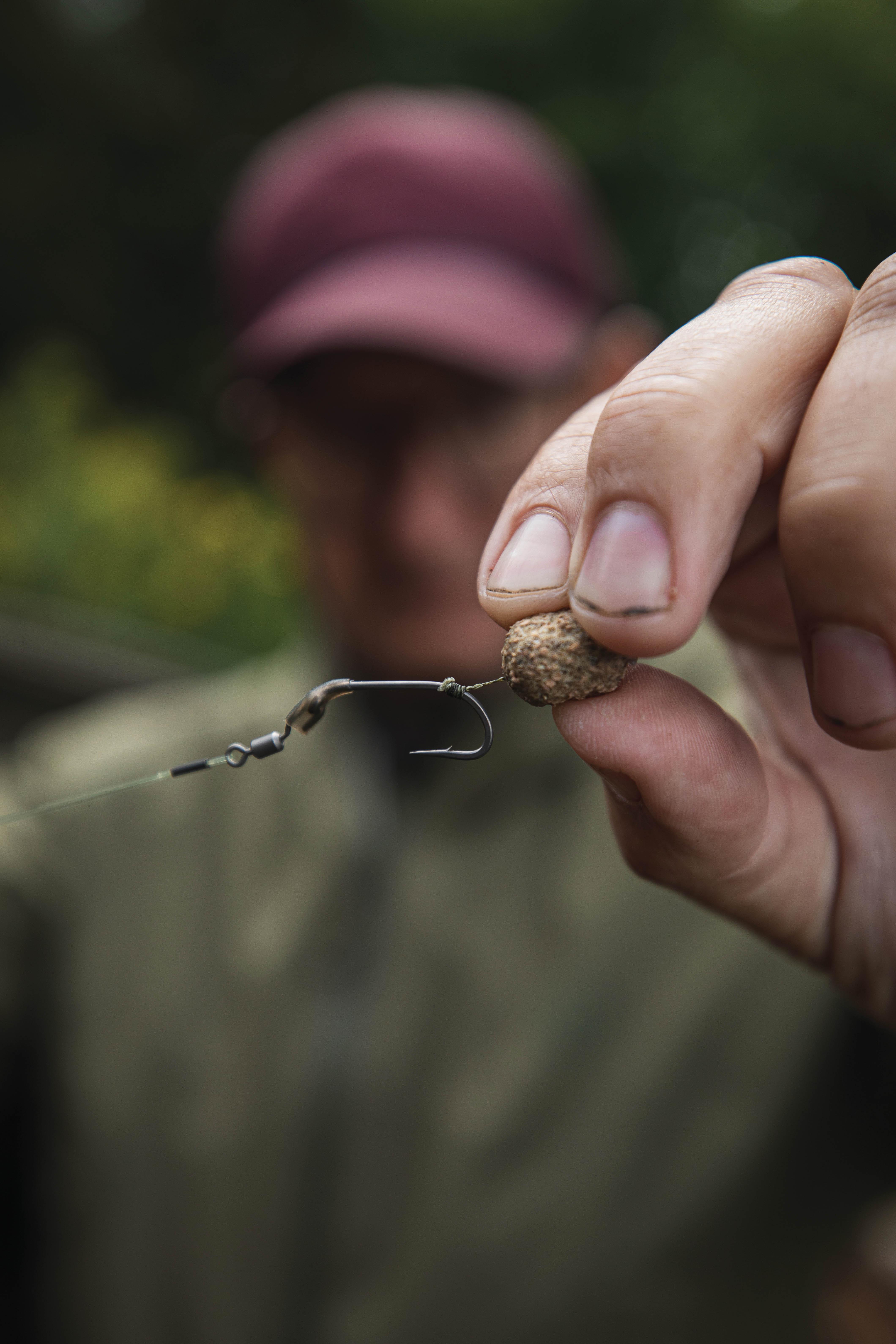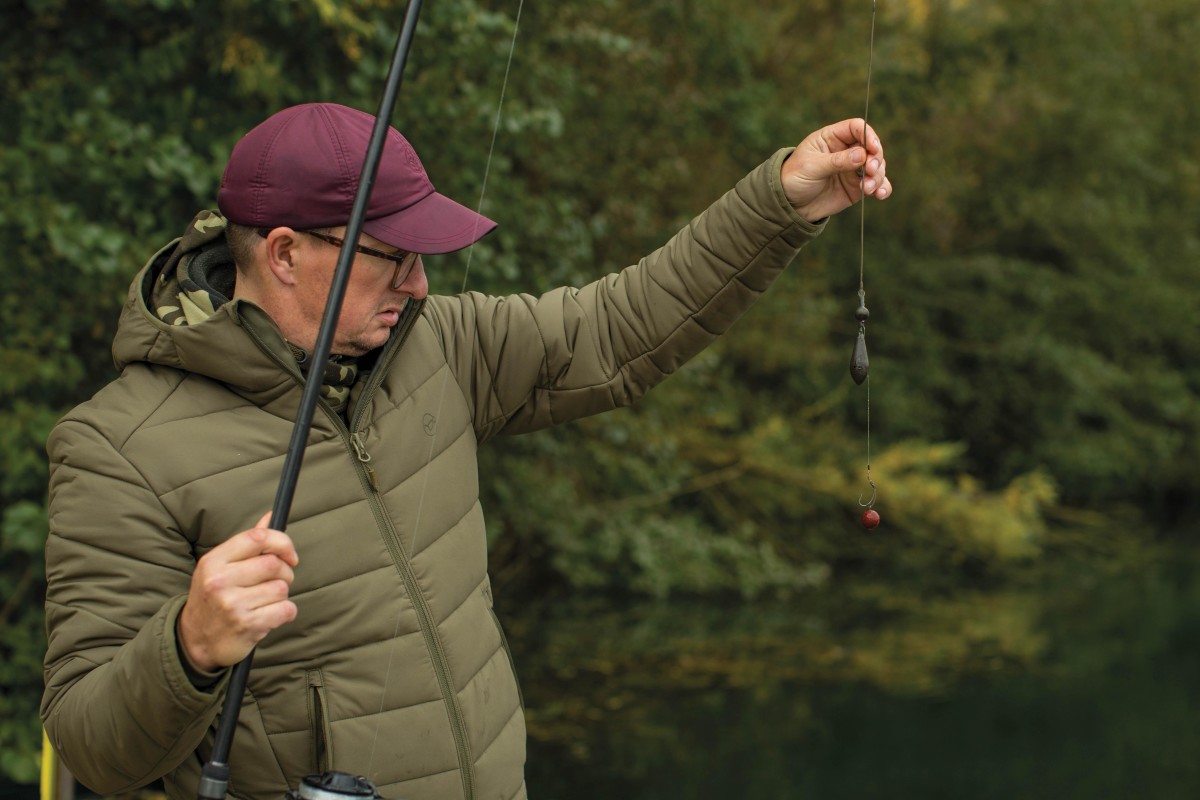
A D-Rig On The Back Of A Spinner Rig!
Korda’s kingpin, Danny Fairbrass, gives us his thoughts on terminal tackle and rig arrangements in 2022…
As far as game-changing moments go, rig-wise, for me, there haven’t been any. Changes occur every time I go fishing. When we were filming the original Underwater films, though, it was the length of the hooklink. When we halved the length of the hooklink, we immediately started getting takes. Also, changing to a bottom bait when the fish wouldn’t pick up a wafter on a hard, gravelly bottom. Again, when we changed from a wafter to a trimmed-down bottom bait, we started getting takes straight away. Everything about the weight of the hook having to be negated is, in my opinion, complete baloney!
The last rig-related items I used and loved were long-shank hooks. I use the Long Shank X in size 6 in the UK during the winter, and the size 2 in Europe in the summer. They turn and catch hold so quickly. Because of the length of the shank, their inturned eye and straight point, they are beyond spiteful. The downside is that if you have to fish barbless, they come out too easily. I’ve had some disasters and have lost big ’uns on barbless venues. If you can use barbed hooks, however, and obviously ours are micro barb, then they’re fine. The winter before last I had 17 fish from a difficult syndicate water, all on the Long Shank X in size 6, and during that time, not another carp was caught by anyone else on the syndicate. Someone caught one the day before I had my first bite, and a guy caught one on the day of my last bite. Other than those fish, though, between November and March, no one else caught. They were big fish, too, and I landed every single one. I’ve rekindled my love affair with long shank hooks, shall we say.
I won’t say what’s on my wish list for an end-tackle item, because it will give the other big companies a jump on what we might be doing in the future, but it’s hook-related. You have to have hard samples, so you have to order a thousand of each size in the same tempered steel, with the same coating and everything else. Take the Klor hooks, for example. I ordered a thousand size 4s and a thousand size 2. It took us around four years from when we originally ordered them and started using them, to then bring them out. It’s the same with a pattern I’m using now, which I already have great faith in. I’ve had big fish on these hooks already, and from various different venues. The pattern will continue to be tested, and tested again until we’re 100 per cent happy. Only then will we market them.
The best rig tweak or trick I’ve seen came courtesy of Steve French. Steve spent all summer driving the weed boat. Prior to him using the solid bags that he prefers now, he would use only bottom baits straight from the bag, no matter how weedy it was. Using pop-ups, according to Steve, is cheating. Using wafters is also cheating, he says, although I think he’ll use them now, because they’re a bit harder. He moved from bottom baits, straight out of the bag, to solid bags, and he’s an absolute solid-bag master.
Steve comes on my mate’s trip to Gigantica each October. He can come out last in the draw and still be top rod, and from a swim that none of us will have wanted. He’s an out-and-out boilie angler, but he uses solid bags, and he’s honed the method to the nth degree. He always impresses me when I watch him fish.
Everyone influences me when it comes to rigs—everyone. I’m an open book, and I take note every time I see a rig, whether someone’s winding in a rubbish one or a good one. You never stop learning.
I was shown a whipping knot at the Big One at the NEC. It was thirty years ago, I had a little pasting table with a few leads spread out on it, and a guy showed me that knot. I still use it today. I’ve still never seen him fish and I don’t know what he’s caught, but that’s me.
Then there’s the little extra loop you tie in the loop on your spod rod so that you don’t have to unpick it at the swivel, and just pull at the loop instead. I saw a youngster using it at one of our Carp Academy sessions.
“What’s that?” I said.
“Oh, that’s so you can pull it open,” he replied.
‘Oh, mate, that is the business!” I said, and I’ve used it ever since.
I have an excessive collection of hooks. In my van I have three stacking drawers, the kind you can buy in the pound shops. They’re full of end tackle. I also have hookbaits that are sweet, hookbaits that are savoury and hookbaits that are food-based. I have loads of hooks with me, all the time, and I have loads in reserve. I’ve got patterns that I’ll probably never use again. Every now and then, I’ll go through them. I had loads of the Kontinentals that Damian Clarke uses at Rainbow, and I took them all out. I’d had them in there for about ten years, and finally, I gave them to him, because I knew that I was never going to use them. It’s fair to say that I have an unhealthy obsession with hooks!
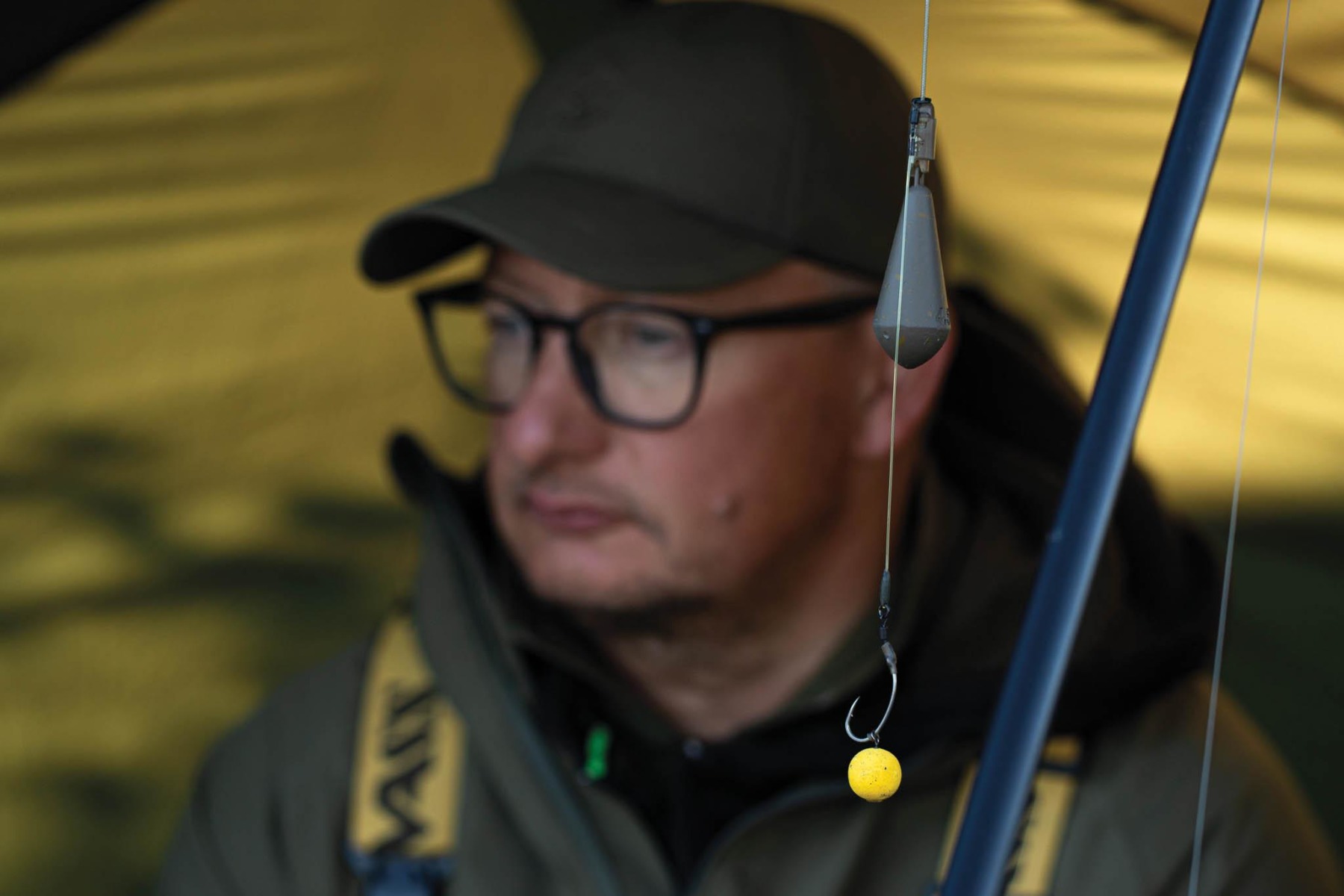
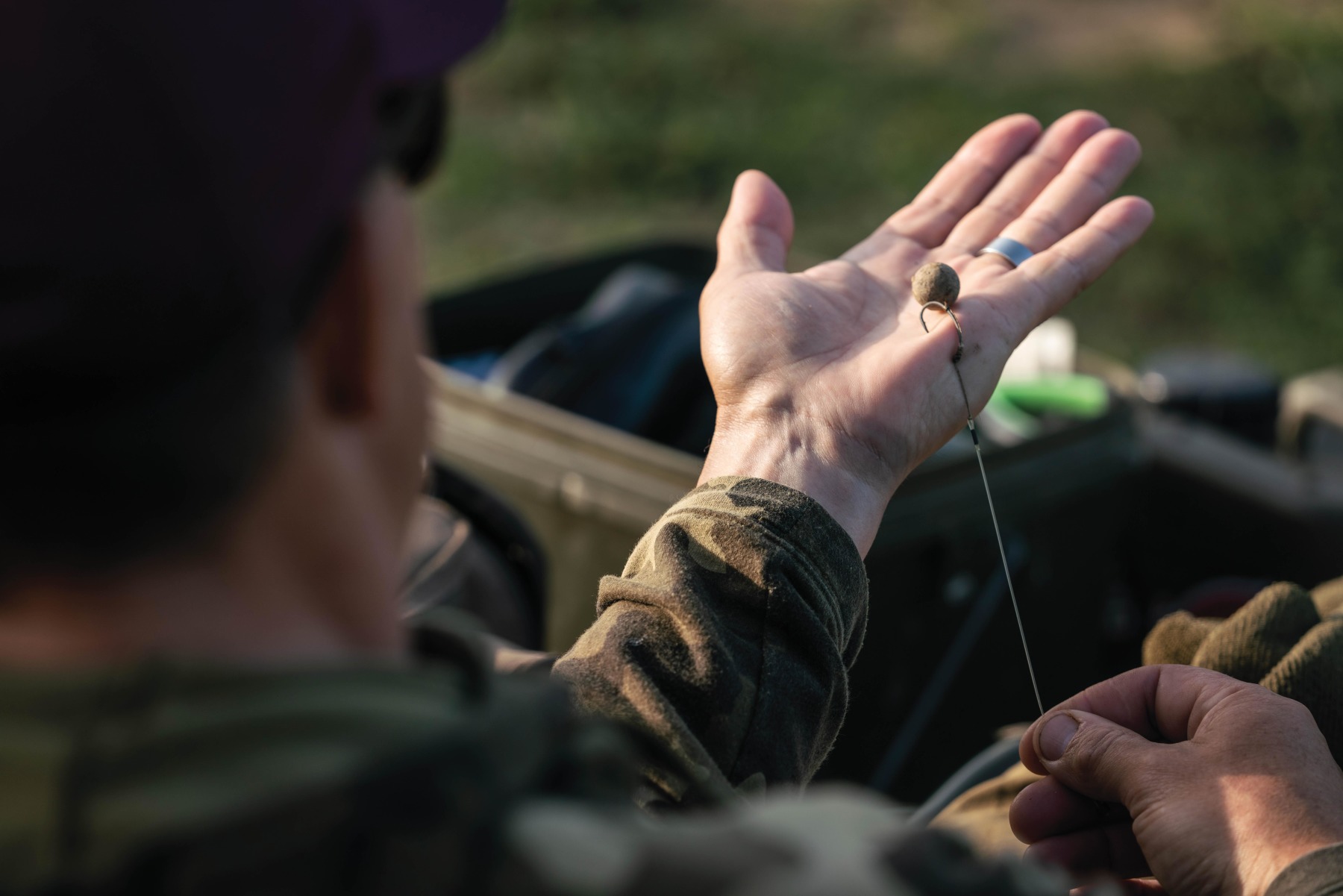
Rig innovation at the moment, I believe, has stalled. We’re not moving forwards, and I’m not aware of any current significant developments, but there will be at some point. There will, in the future, be a change of material or a new process that will make things harder to see, stronger for something’s diameter, sharper or whatever. There will be little increments of improvement.
When it comes to rig mechanics, though, from my own experience and from filming the Underwater films, I know that there’s no single solution that will solve everything. I can say, absolutely, that it’s not out there. The substrate determines how a rig will behave, and that varies, so you have to construct your rig according to every single spot, on every single lake or every single river, and there isn’t going to be one rig that’ll do it all.
Someone might come up with something whereby the hook will go into a fish’s mouth and it will not come back out again, but that might then be outlawed, perhaps, because so many fish will end up trailing tackle. I’d be surprised if anything comes along like the Hair Rig, though. I’ve said the opposite in the past, thinking that something’s on its way, and it hasn’t been.
One small tweak I made to a rig that had a massive outcome was, as mentioned already, when I changed from a wafter to a bottom bait when fishing over a hard, gravelly bottom, and by that I mean that the bottom of the bait touches the lakebed. I’m utterly convinced that when fishing over a clean bottom, we have all—and I include Darrell Peck and Tom Stokes here—used too buoyant a hookbait, for a very long time. There is massive mileage in the use of bottom baits, straight out of the bag, or half a wafter on top of half a bottom bait… not half a pop-up so it’s off the bottom and moving around, but half and half, wafter and bottom bait. Or, perhaps, a bottom bait with just a little of it drilled out for a small piece of cork in the top, so it always sits the same way—readers about 800 years old, like me, might remember the Weebles, and it’s the same principle.
Hand-sharpened hooks can be a massive edge on the right venue. If you’re snag-fishing, you shouldn’t use them. If fish weed you on a regular basis, and your tackle’s strained as you try and get them out, then to me, sharpened hooks are the enemy. For open-water situations where there’s not a lot of weed, however, they’re fine, but not when they’ve just spawned. Having spawned, they’re full of beans, erratic and hungry, and that’s when anglers will experience hook-pulls, so they shouldn’t use hand-sharpened hooks.
That winter when I had 17 fish, I wasn’t using hand-sharpened hooks. It was unprecedented and it was a good year, because it had flooded in the spring and not a lot had been caught. The fish were there to be caught. I had a few blanks, but eventually, all my stars aligned and I made the most of it, and they were all on hooks that hadn’t been sharpened. I use hooks straight out of the packet, more than I use hand-sharpened ones.
My preferred length of hooklink is whatever is right for the session, on the spot I’m fishing. There’s no standard length, as such. It might be a cliché, but if you’re feeding 2mm pellets and the fish aren’t moving, you want the shortest hooklink you can get away with. If you’re putting out 20mm boilies, however, and they’re going everywhere, a hooklink that’s too short will be a disadvantage, because they won’t be able to get it in their mouth, and you’ll end up with hook-pulls because they’ll be just nicked.
To an angler who might want to use one length of hooklink for the rest of their days, I’d say, “Sorry mate, it doesn’t exist.” You have to read the situation in front of you, and adapt. Very generally, if you’re spread-baiting, you should use a longer hooklink, and if you’re baiting tightly, you should use a shorter hooklink.
I try to use the shortest hooklink I can, depending on the situation I’m faced with, so if I’m fishing boilies, perhaps on a Spinner Rig, that might be seven-inches, plus the hook. If I’m on solid bags—referring back to Steve French, who I mentioned earlier—then it has to be four-inches, from the loop-to-loop coming from the inline lead, to the top of the bend of the hook. In that situation, a hooklink longer than three-and-a-half to four-inches is too long. As anglers, we have to know what our rig’s going to land on, and adapt to that, rather than use one arrangement everywhere.
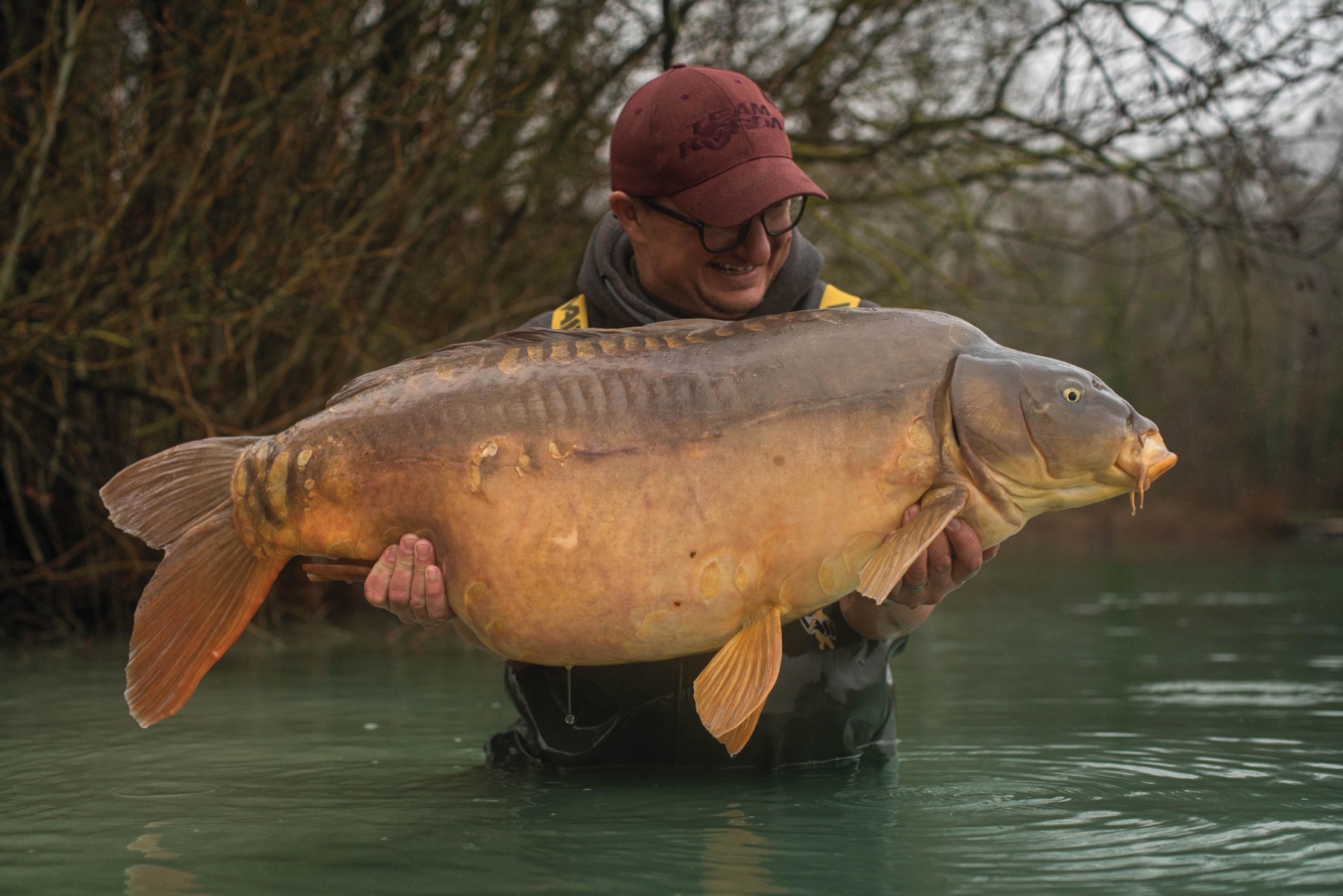
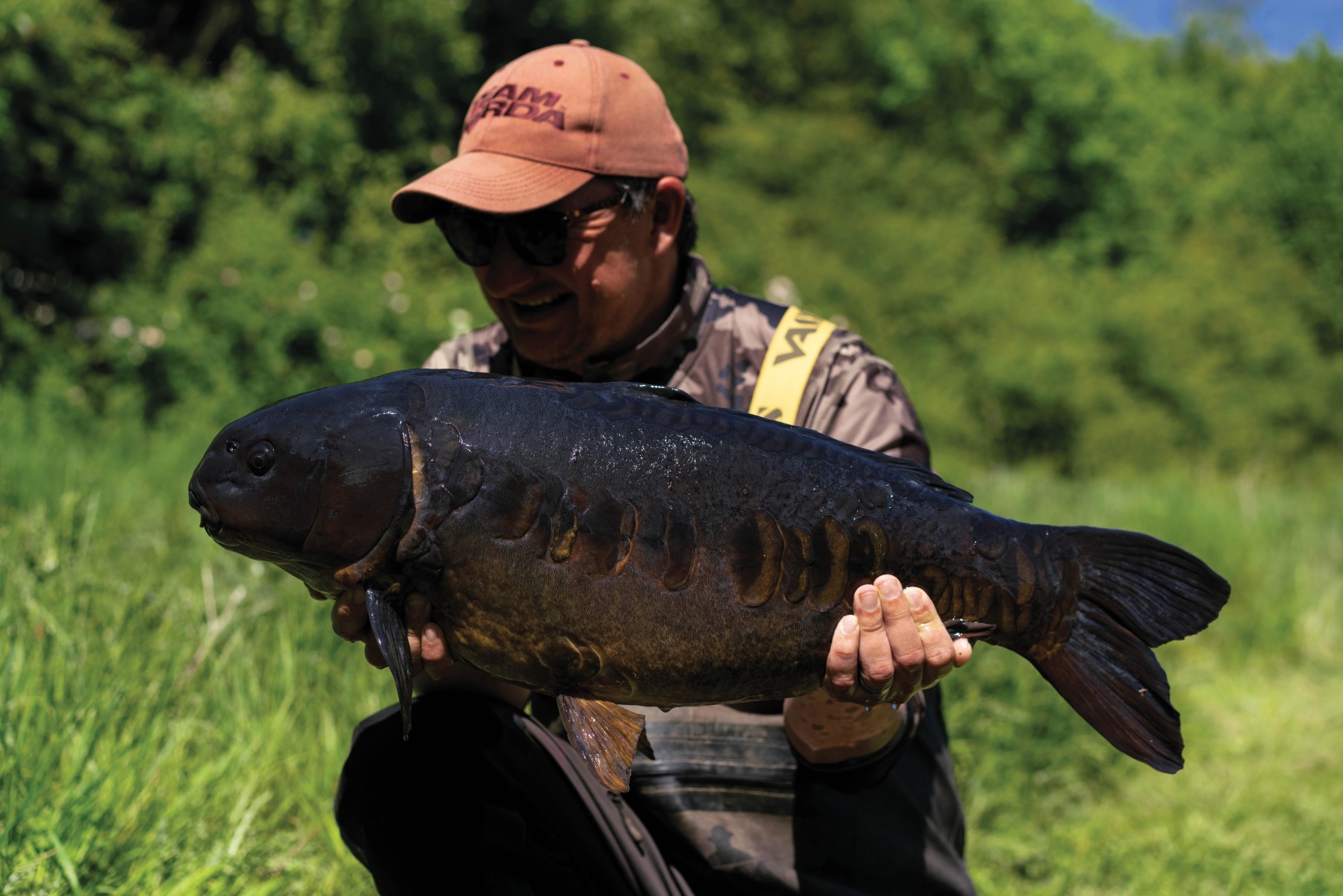
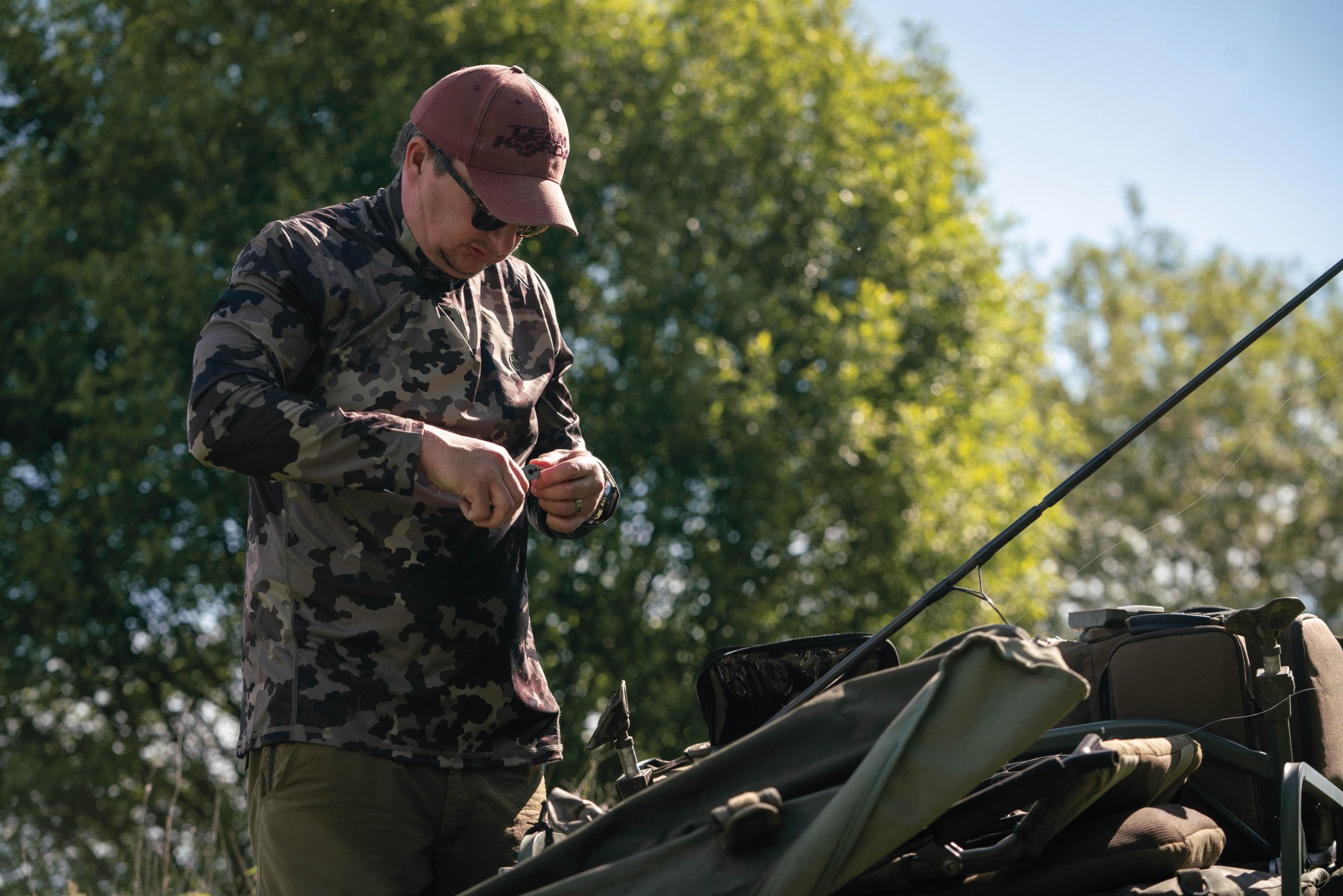
When it comes to hooklink materials, it’s whichever suits the rig I’m casting out. If I’m on solid bags, I’ll use Supernatural in 25lb. In that situation there’s no point in using a super-fine braid. I’ll use a Sinker midway, because it’s made with Dyneema and is neutrally buoyant. The rest of the time, I’ll mostly use Boom, straight through for the Spinner Rig, with a pop-up or a wafter. Otherwise, it’s loops and booms.
When fishing small hookbaits, when they’re feeding delicately because it doesn’t take much effort for them to suck the hookbait in, if you use a stiff hooklink and a big hook, even with a reasonably buoyant bait, they’ll suck at it and it won’t move. They’re sucking in small bits of boilie or boilie crumb, and that kind of rig is too restrictive and too agricultural, shall we say. They’ll leave the hookbait, and once a fish has left it once, it won’t go back to it. Another fish might take it, but I think there’s something that goes on between them, and they know. I’ve seen it with the Underwater films. Their fins will fan out, and until you re-cast it, nothing else will touch it. In that situation, I’ll use a Combi Rig, which is only a loop and boom, that’s all. The stiff section pushes the hookbait away from the lead, and the soft section allows the bait to move easily so that the hook can enter the fish’s mouth.
If you want to make sure that you land everything you hook, I think that having braid near the hook gives much better hook-holds. With a stiff hooklink, the hook might go in their mouth, but it might still not touch their lips. If the fish moves, then it might turn and catch hold, but you might only nick ’em. If I’m losing fish on a stiff set-up, I’ll change to a Combi Rig and make my hookbait a little heavier if it’s not too weedy. The weight of the bait will pull the hook in. If it’s a Combi Rig with a bit of braid, you’ll stop experiencing hook-pulls.
When it comes to mounting my hookbaits, I like to floss if I’m fishing straight through, and then I’ll burn the end. I’ve never used a bait screw in my life. They look brilliant, but they make me a bit twitchy… you know, when you wind in at the end of a night and there’s nothing on the end of any of them! I use a braided Hair more than anything else, so even if I’m using a stiff rig, I’ll use the whipping knot that I love, and I’ll tie a braided Hair to the top of the shank of the hook. I form a short Hair, rather than having it like a Blowback Rig. If the bait is off the hook, I believe you’ll get better hook-holds. I don’t like any rigs where you have a wafter sliding up and down the shank of the hook.
A D-Rig is really good for hook-holds because the bait isn’t on the hook. If you’re fishing a wafter on a Ronnie Rig, a Spinner, or whatever you want to call it, rather than having the bait sliding up and down the hook, if you use one of our D Rig Kickers, the bait will slide along the ‘D’ just off the hook and you’ll definitely get better hook-holds. The use of Spinner Rigs results in more hook-pulls than most other rigs, and I think it’s because the bait is attached directly to the hook.
Something even I haven’t done much, but I should, is use a D Rig Kickers on the back of a Spinner Rig. Use the right length to create a slim ‘D’, rather than have the bait a long way away from the hook. Pop-ups work really well, because the bait and the hook are really close to each other. The fish will suck the bait in, and the hook’s right there, that’s why Chod Rigs and Hinge Stiff Rigs—both of which I love to use—are such good hookers of fish. With the kicker arrangement, the bait isn’t actually on the hook. I’d urge readers to try it with a Ronnie or Spinner, a pop-up and D Rig Kicker. Use the right size kicker, so that when it slides up, the top of the kicker comes only as far as where the barb would be. Make sure, too, that it’s really tight, so you’ve had to stretch it up, and the ‘D’ isn’t bent right out. The bait and the hook, as mentioned, should be really close together, but the bait isn’t on the hook.
I really must try that now, because I remember times when I’ve converted a bottom-bait rig with a ‘D’ for use with a pop-up. I’ve then had a fish and the hook-hold’s been absolutely perfect. I’ve thought at the time that there must be something in it, and yet I’ve not done it again. We like things simple, though, and easily put together, and that’s why the Ronnie Rig is so popular, because it’s easy to tie.
